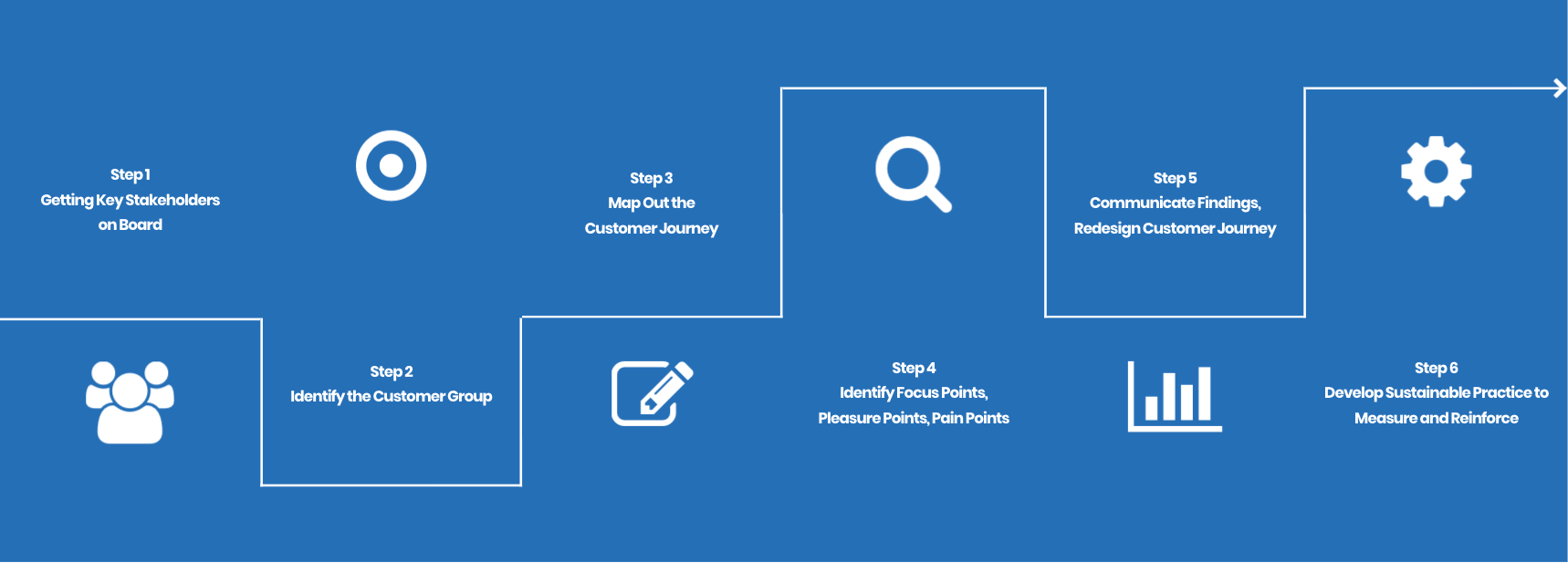
Did our customers enjoy our brand’s service experience? Was the waiting time too long? Was the staff reactive in providing assistance? Was the staff engaging customers?
Why are our customers dissatisfied even with quality service rendered? Is brand loyalty still low despite the quality products offered?
Customer Journey Mapping is the key to discovering the answers to the above questions. It helps you to redesign your customer journey by understanding and acting on factors that customers perceive as important and would delight them in this experiential economy.
Step 1
Getting Key Stakeholders
on Board
Step 3
Map Out the
Customer Journey
Step 5
Communicate Findings,
Redesign Customer Journey
Step 2
Identify the Customer Group
Step 4
Identify Focus Points,
Pleasure Points, Pain Points
Step 6
Develop Sustainable Practice to
Measure and Reinforce


